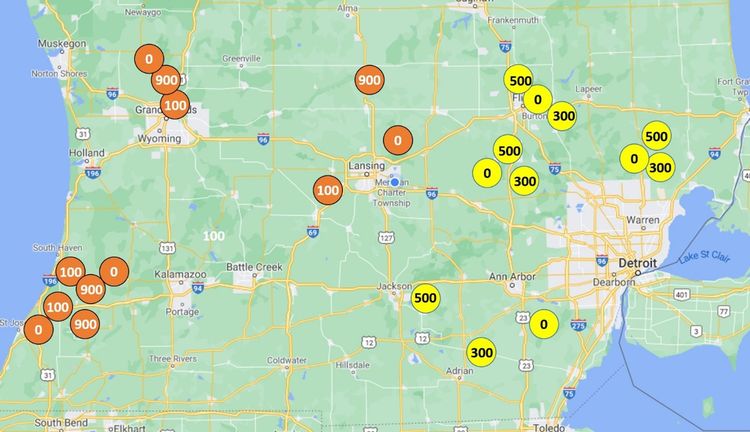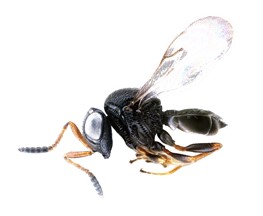Dec 29, 2020Biological control of brown marmorated stink bug targeted by samurai wasp
A tiny wasp, about as big as a sesame seed, that lays its eggs into the eggs of stink bugs is the most promising biological control agent against the brown marmorated stink bug.
Originating from the same part of the world as brown marmorated stink bug (BMSB), the samurai wasp (Trissolcus japonicus) has made its way to North America, probably emerging from egg masses accidentally shipped to the U.S. After we discovered it in Michigan in 2018, we began a program to rear and redistribute more of this important parasitoid in the state.


Unlike the samurai wasp, which is able to attack up to 80% of BMSB eggs in Asia, our native parasitoid wasps are only able to attack less than 10% of BMSB eggs in North America, according to Abram et al. 2017. This is why wherever the samurai wasp has been discovered, scientists are very interested in building up local populations through redistribution or augmentation programs in order to speed up the biological control of BMSB.
Through extensive sampling in 2018 and 2019, we found that the samurai wasp was very limited in its distribution in Michigan. From that first live catch of a samurai wasp, we started rearing the parasitoid in the lab for redistribution in 2019 and continued our efforts in 2020 to augment populations. In 2019, the releases were concentrated in southwestern and central Michigan where BMSB have been abundant. In 2020, releases were made in southeastern Michigan (Figure 1).
We were interested in the question of how many individual samurai wasps would need to be released to be able to detect their establishment in a new location. So, in 2019, we compared four sites where no wasps were released to four sites each where we released either 100 or 900 wasps. In 2020, we compared four new sites where no wasps were released to four sites each where either 300 or 500 wasps were released (Figure 1). After each release, we monitored for the samurai wasp at these sites using BMSB egg masses attached to the underside of leaves (Figure 2). These sentinel egg masses were left out in the field for 48 hours and then brought back to the lab where we could record what emerged from them.


Although 7,200 wasps have been released so far across Michigan as part of this study, we have recovered very few wasps in our monitoring efforts. In 2019, we did not find any samurai wasps at the release sites. However, in 2020 we recaptured samurai wasps from one site where they had been released in 2019 and from three sites where they were released in 2020.
What we can conclude from these results is that the samurai wasp reproduces during the summer and can overwinter in Michigan. This is encouraging news and indicates that our efforts to increase the geographic distribution and population densities of this important natural enemy are working. It will still likely take years until we expect to see any impact on BMSB densities, but these releases should contribute greatly for speeding up biological control of BMSB in Michigan.
This research is funded by the Department of Entomology at Michigan State University, MSU AgBioResearch, Project GREEEN, the Michigan Apple Committee, Michigan State Horticultural Society, the Michigan Vegetable Council and Nestle North America (Gerber).
– Marianna Szucs, Olivia Simaz, Larry Gut, John Pote and Julianna Wilson, Michigan State University, Department of Entomology
Figure 2 at top. A brown marmorated stink bug sentinel egg mass attached to a leaf used to monitor for the establishment of the samurai wasp parasitoid. Photo: Marianna Szucs/MSU Entomology















